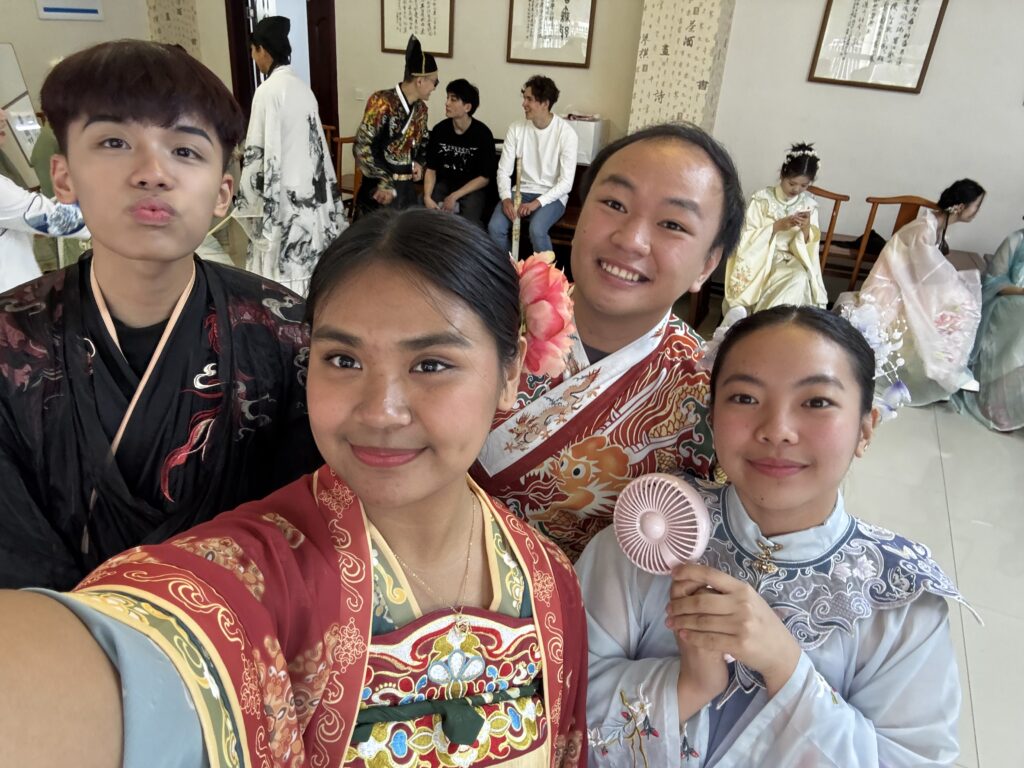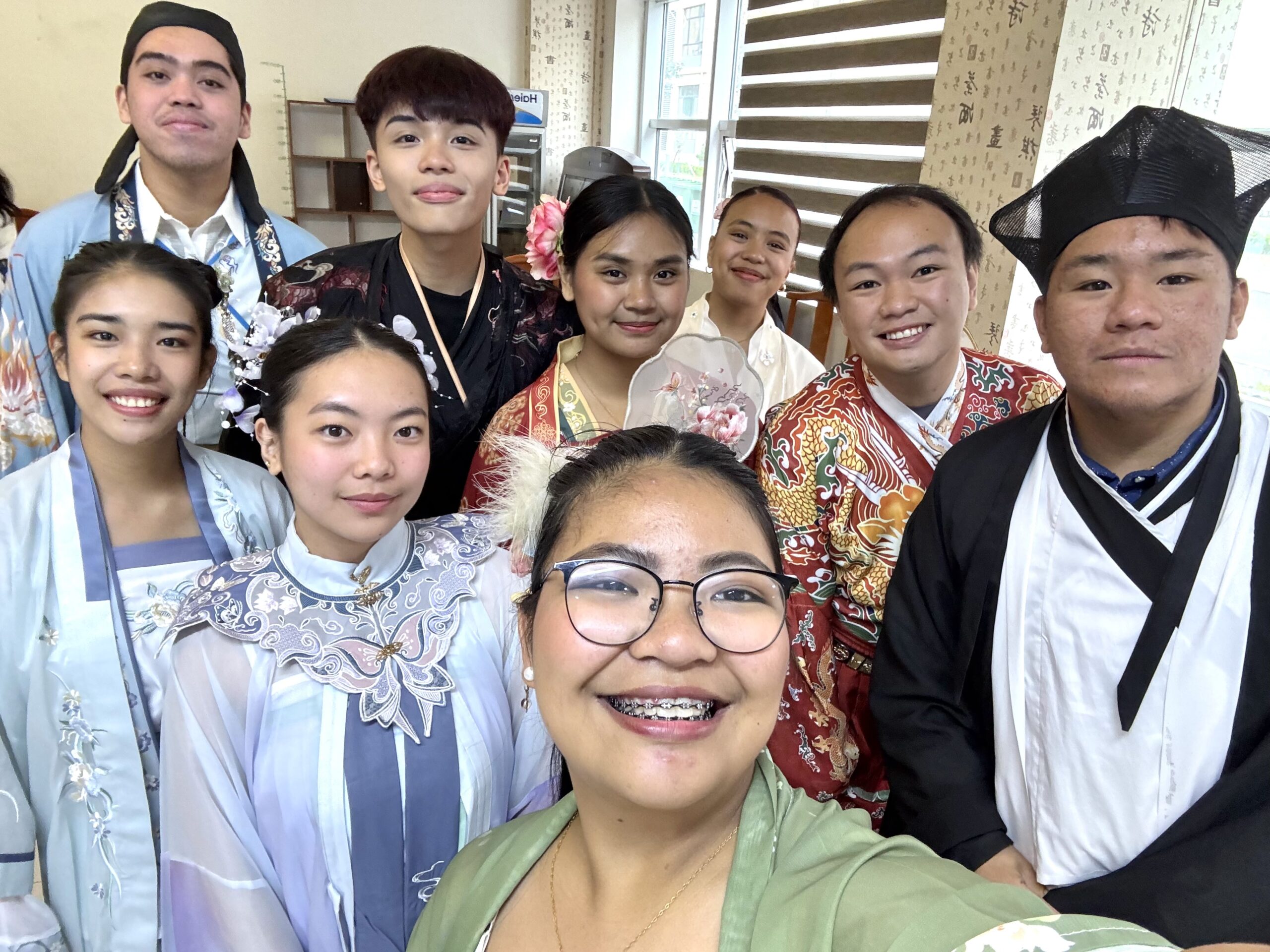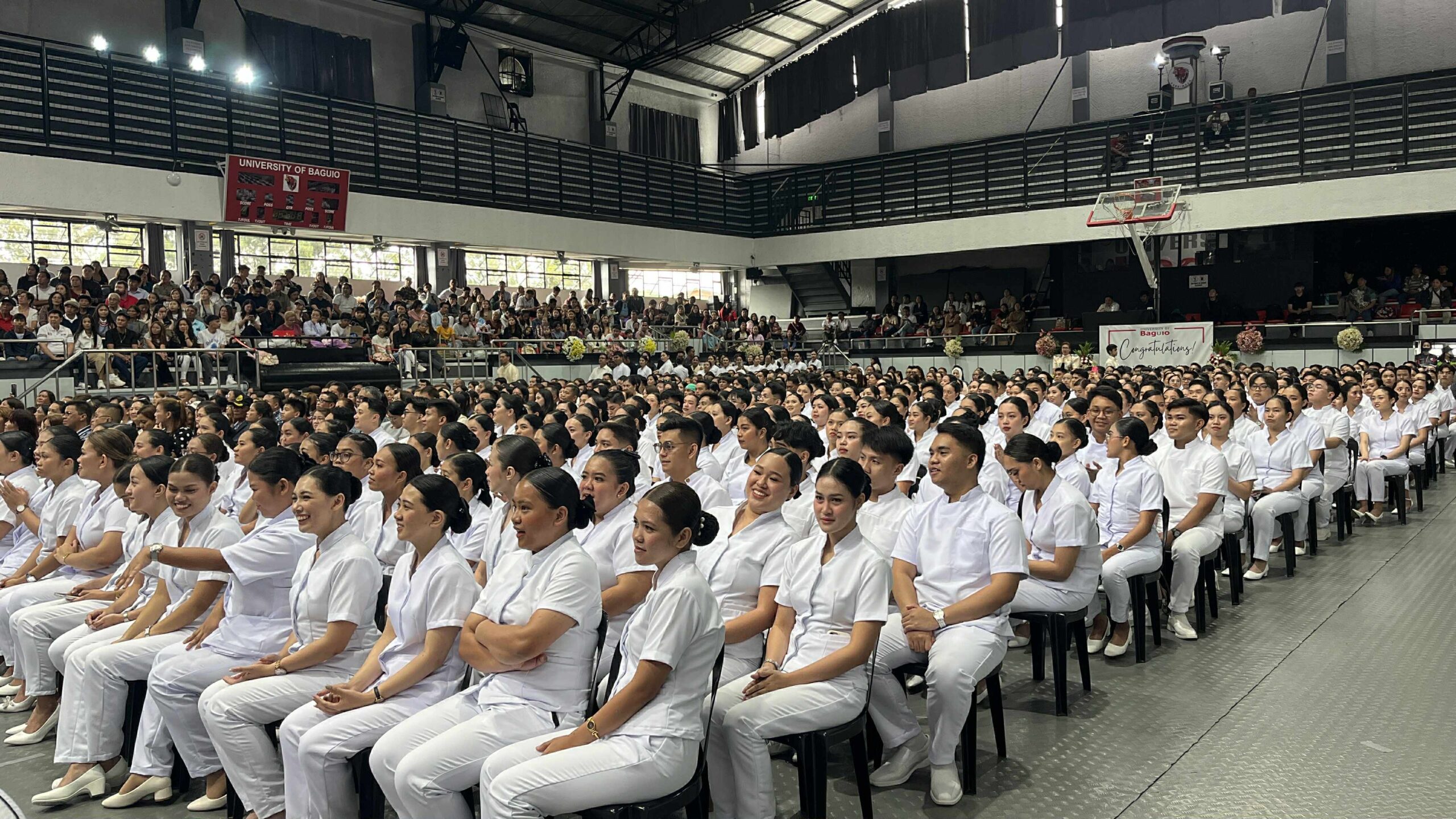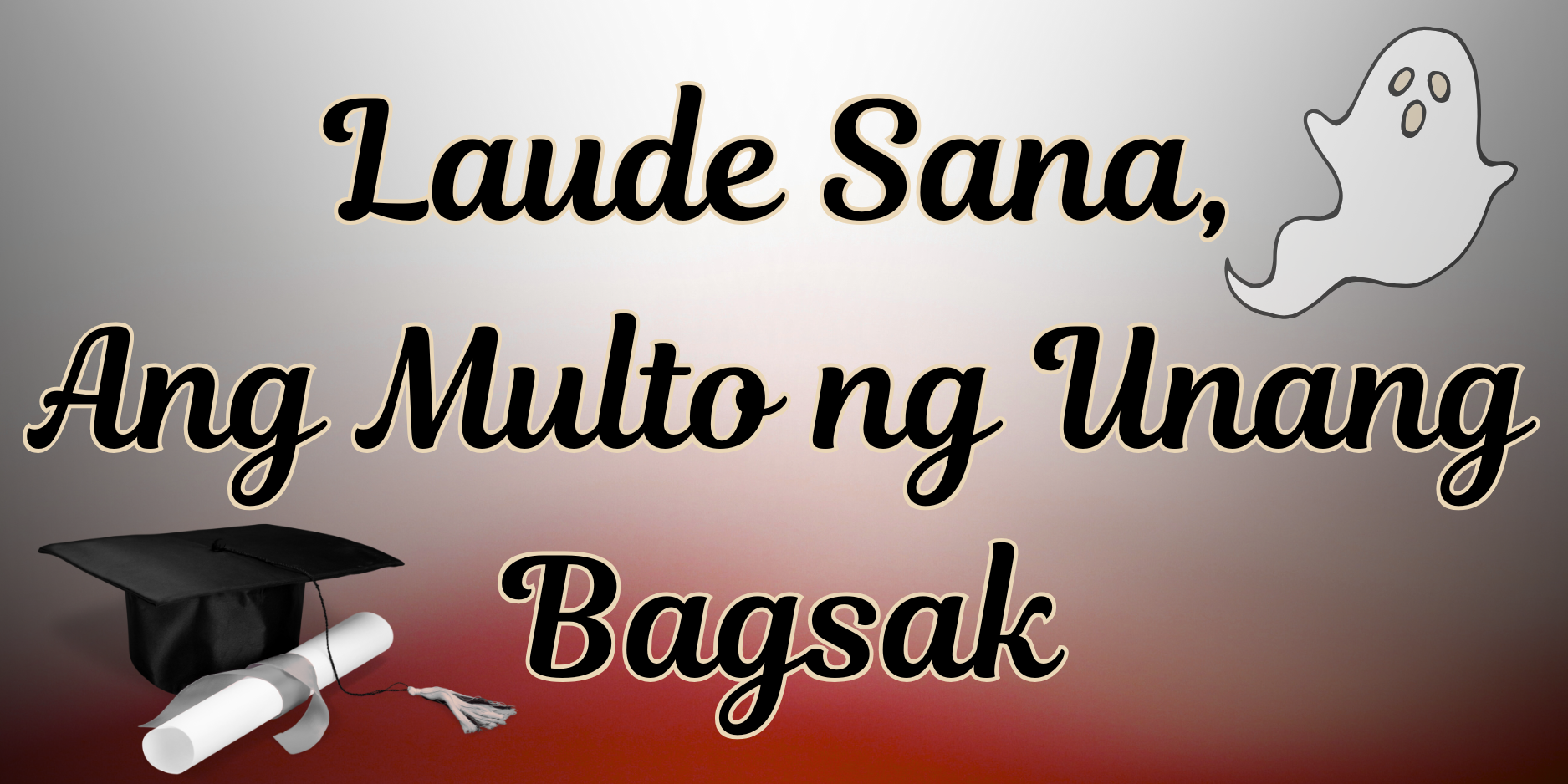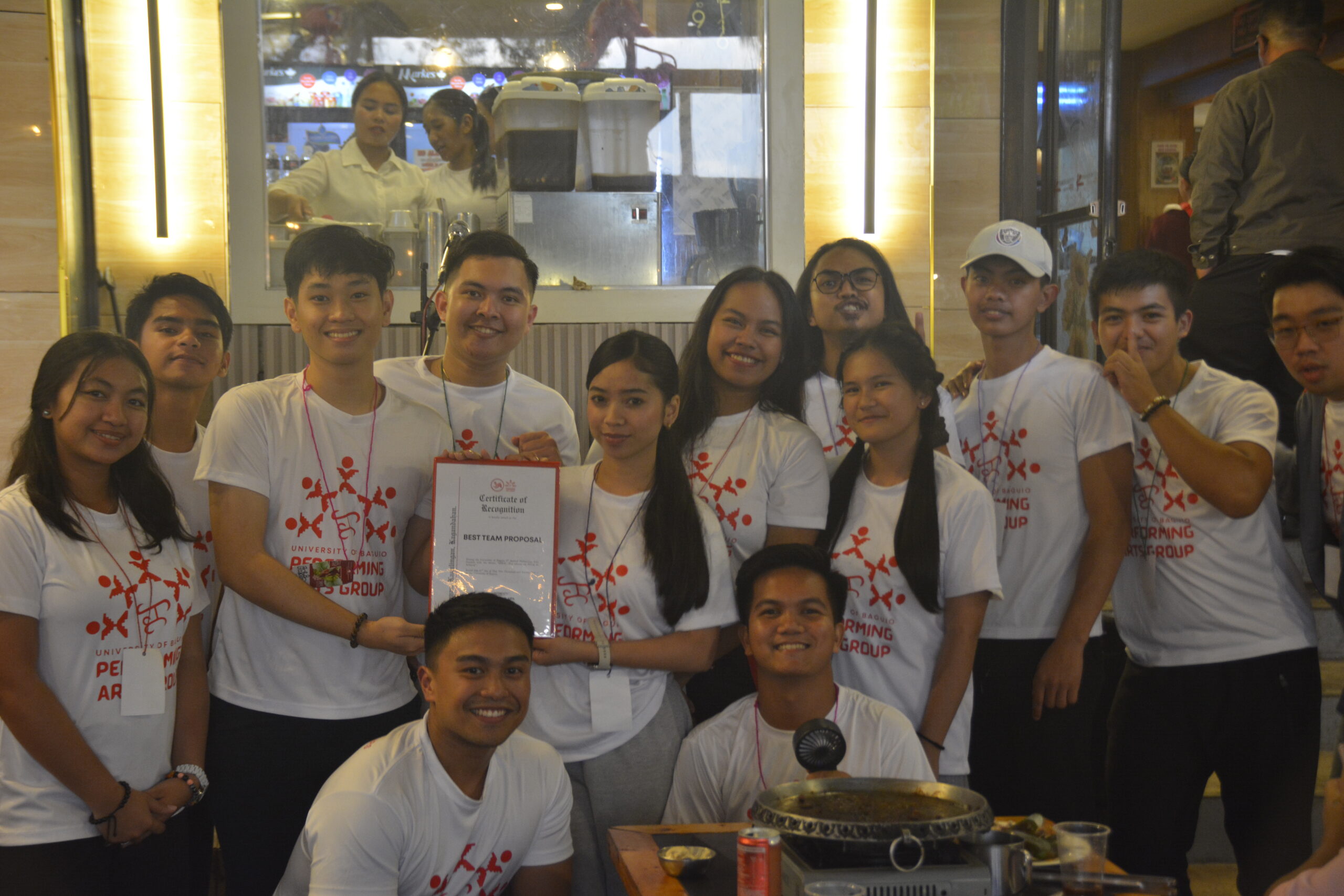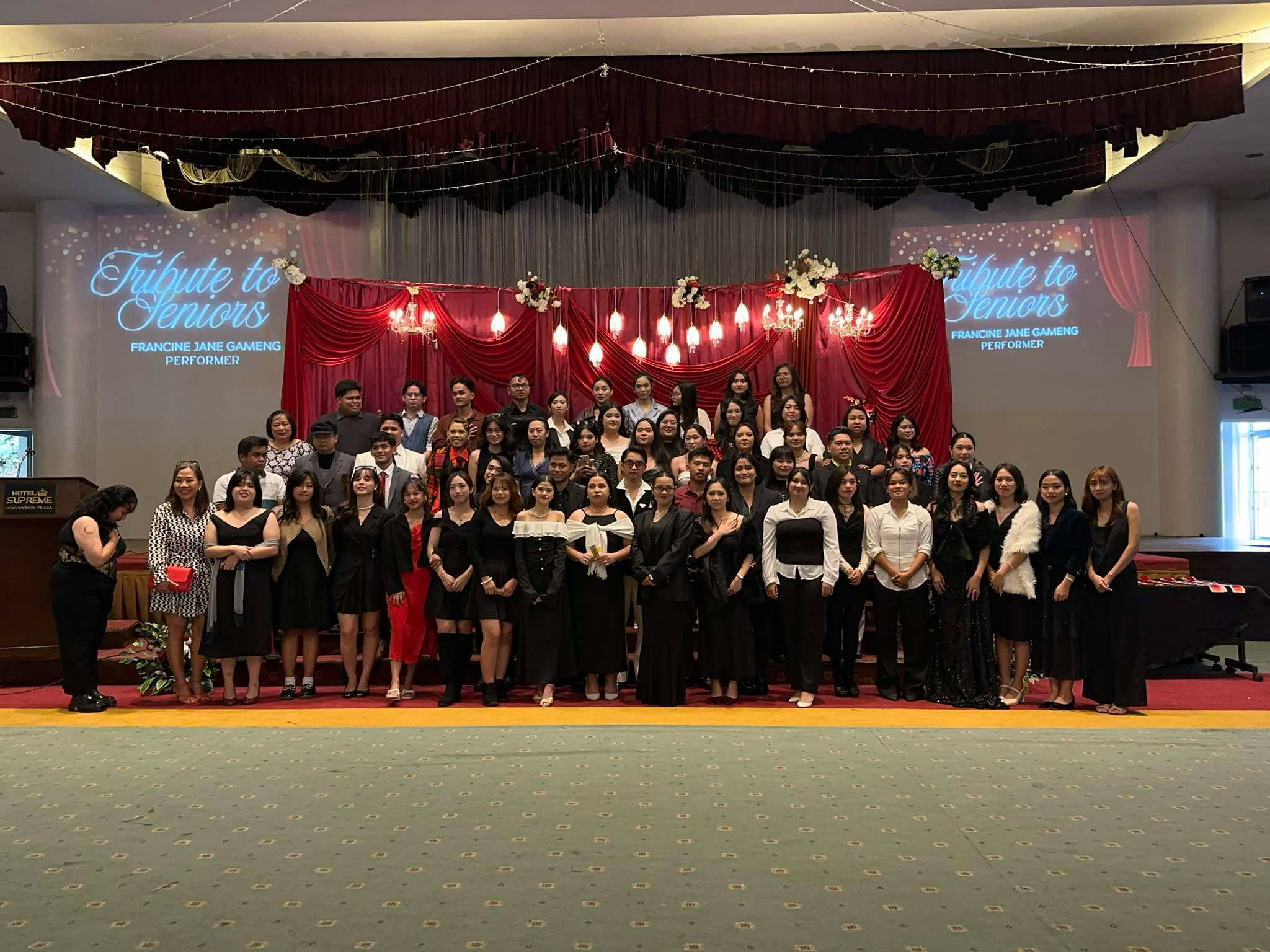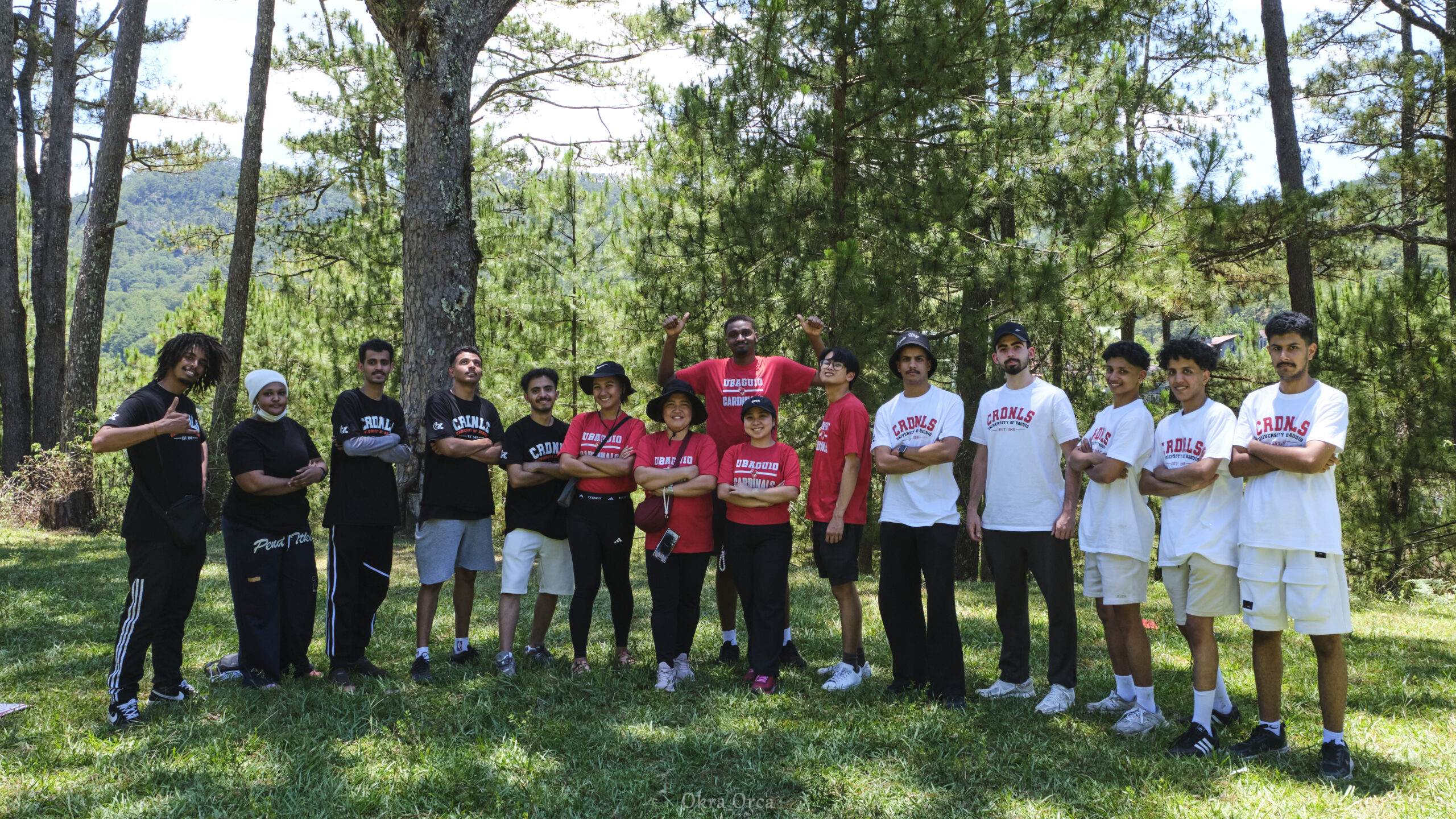Students Exchange – Jining Polytechnic College
Written by Iris Efrain Perez
Every country carries its own cultural identity, shaped by language, food, landmarks, and traditional attire. In the Philippines, for instance, garments like the baro’t saya and the barong are deeply tied to national pride. In China, the 汉服 (hànfú) holds a similar cultural significance, though not officially designated as the national dress, remains a symbol of Chinese tradition. This week, the exchange students of the University of Baguio School of Nursing had the opportunity to immerse themselves in this rich cultural legacy through a 汉服文化体验 (hàn fú wén huà tǐ yàn – Hanfu cultural experience)
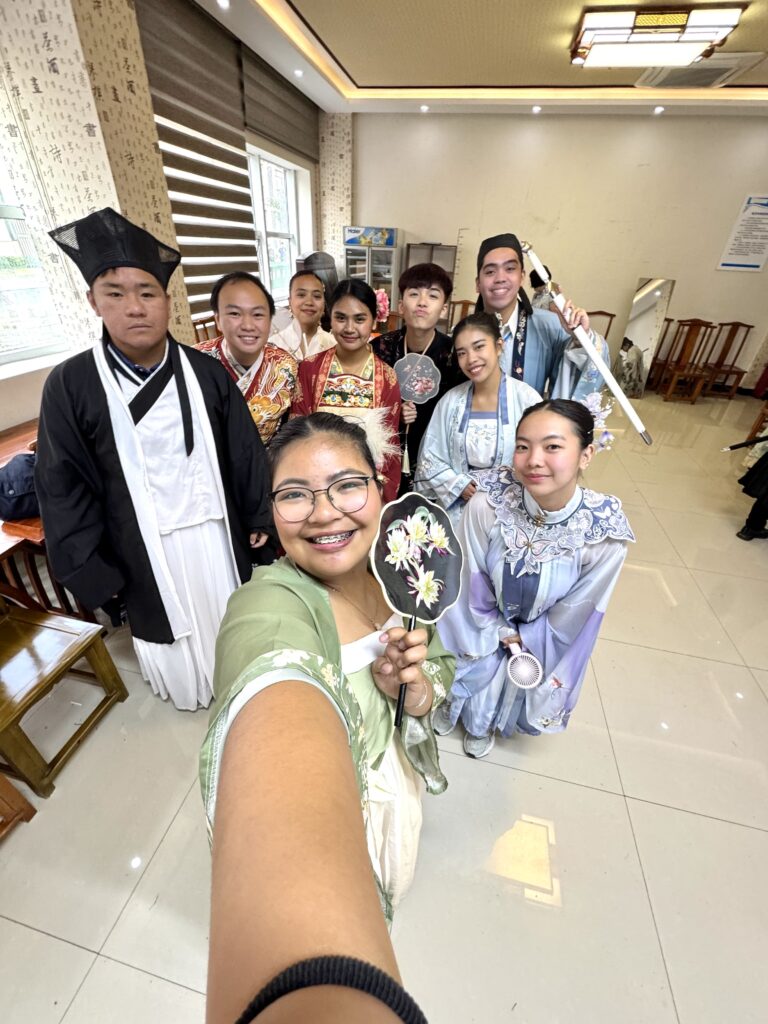
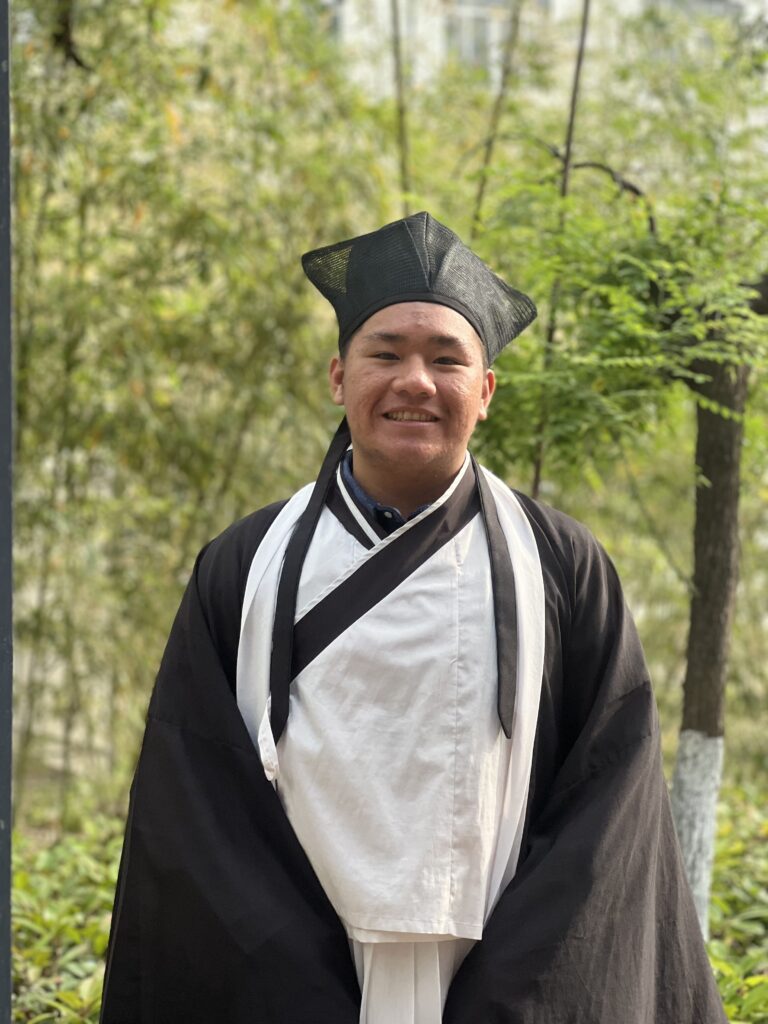
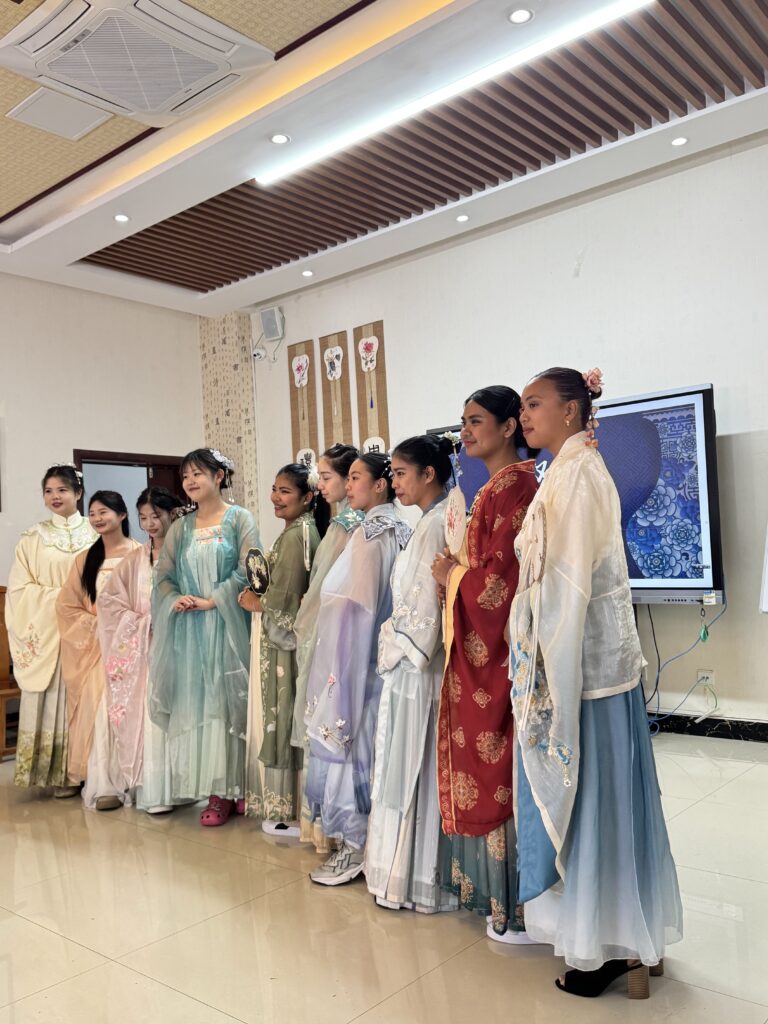
Originating from the Han dynasty, the 汉服 (hàn fú) consist of several parts, which includes the 衣 (yī – an open cross-collar garment); 袍 (páo – full-body garment worn by men); 襦 (rú – an open cross-collar shirt); 衫 (shān – an open cross-collar shirt or jacket worn over the yi); 裙/裳 (qún or cháng – a skirt worn by women or men), 裤 (kù – a type of trousers). Each piece carries historical significance, reflecting the elegance and sophistication of ancient Chinese fashion.
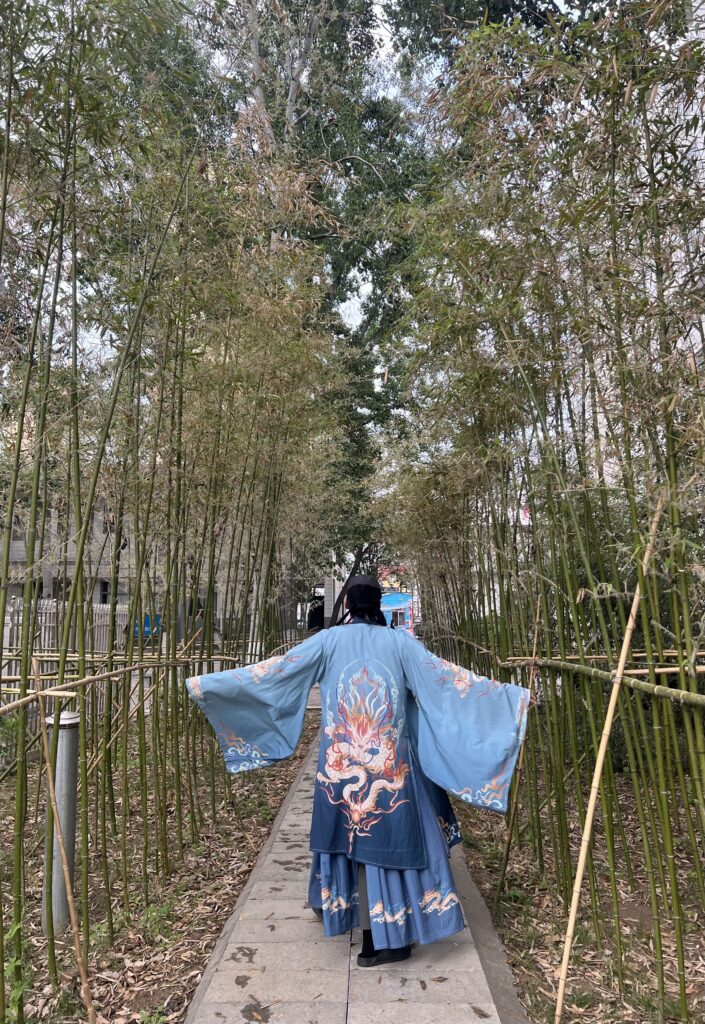
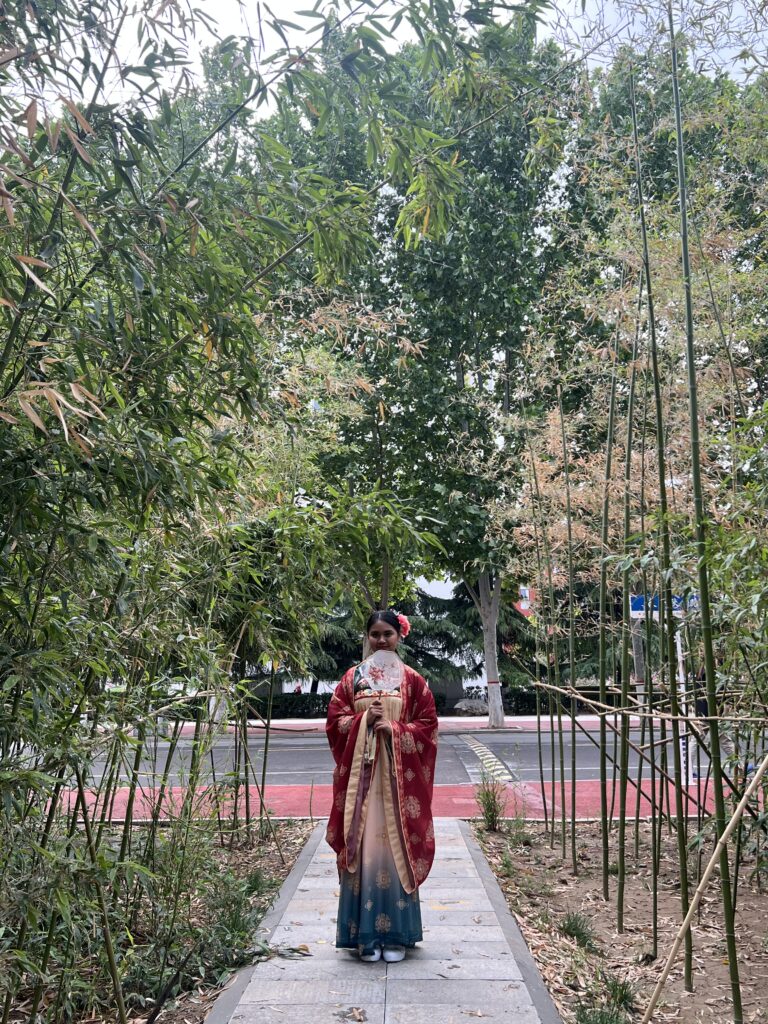

During this week’s cultural immersion class, the exchange students had the opportunity to explore the history and significance of 汉服 (hànfú). With the help of their Chinese classmates, they learned how to properly wear the garments. Each fold, layer, and sash revealed a deeper connection to centuries of Chinese tradition. For many, it felt like stepping back in time.
As part of the activity, students were also invited to wear their own traditional clothing. This gesture allowed for a meaningful exchange, where cultures were not only shared but celebrated. The experience offered more than just a lesson in dress it became a powerful reminder that traditional clothing serves as a living link to history, identity, and heritage.
